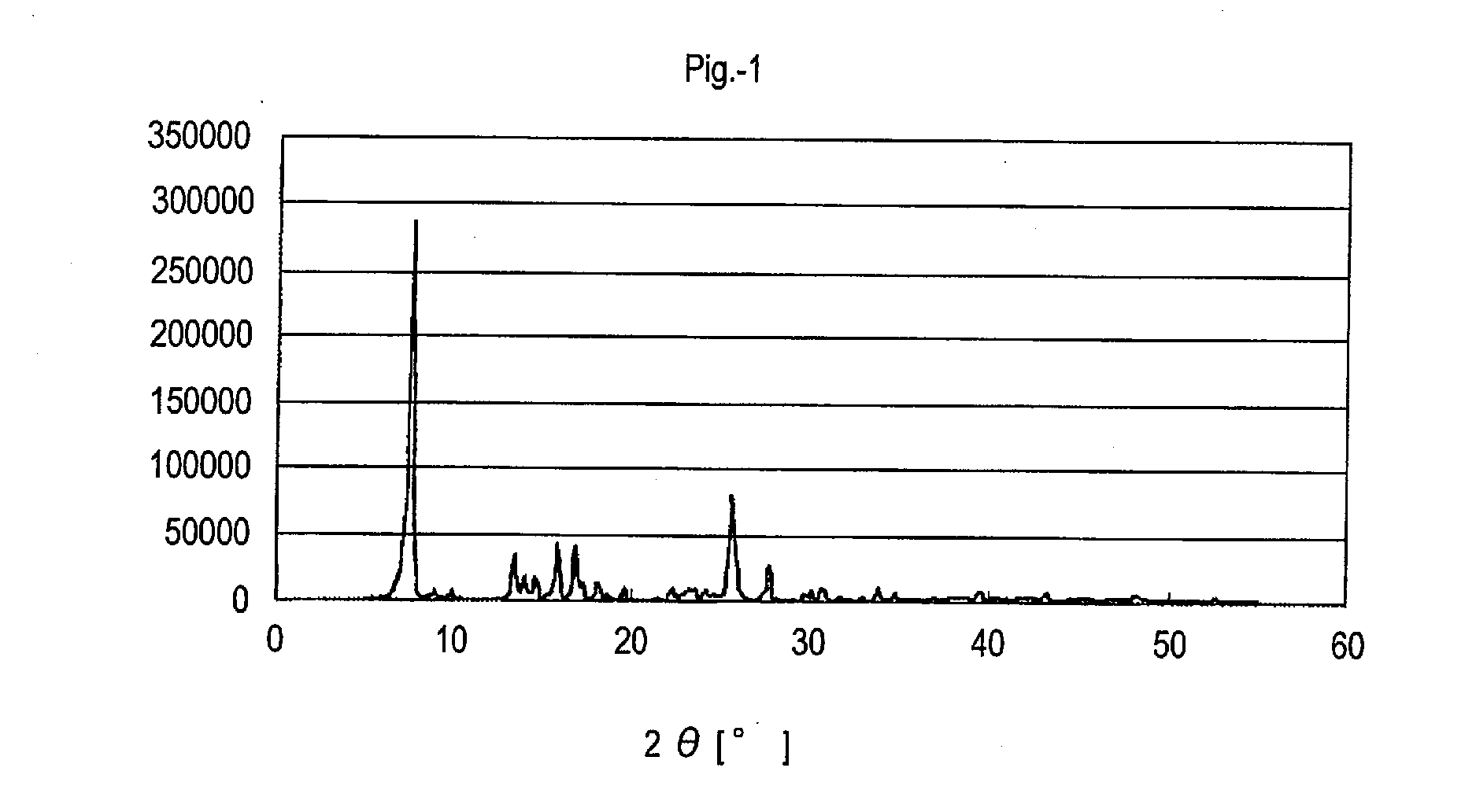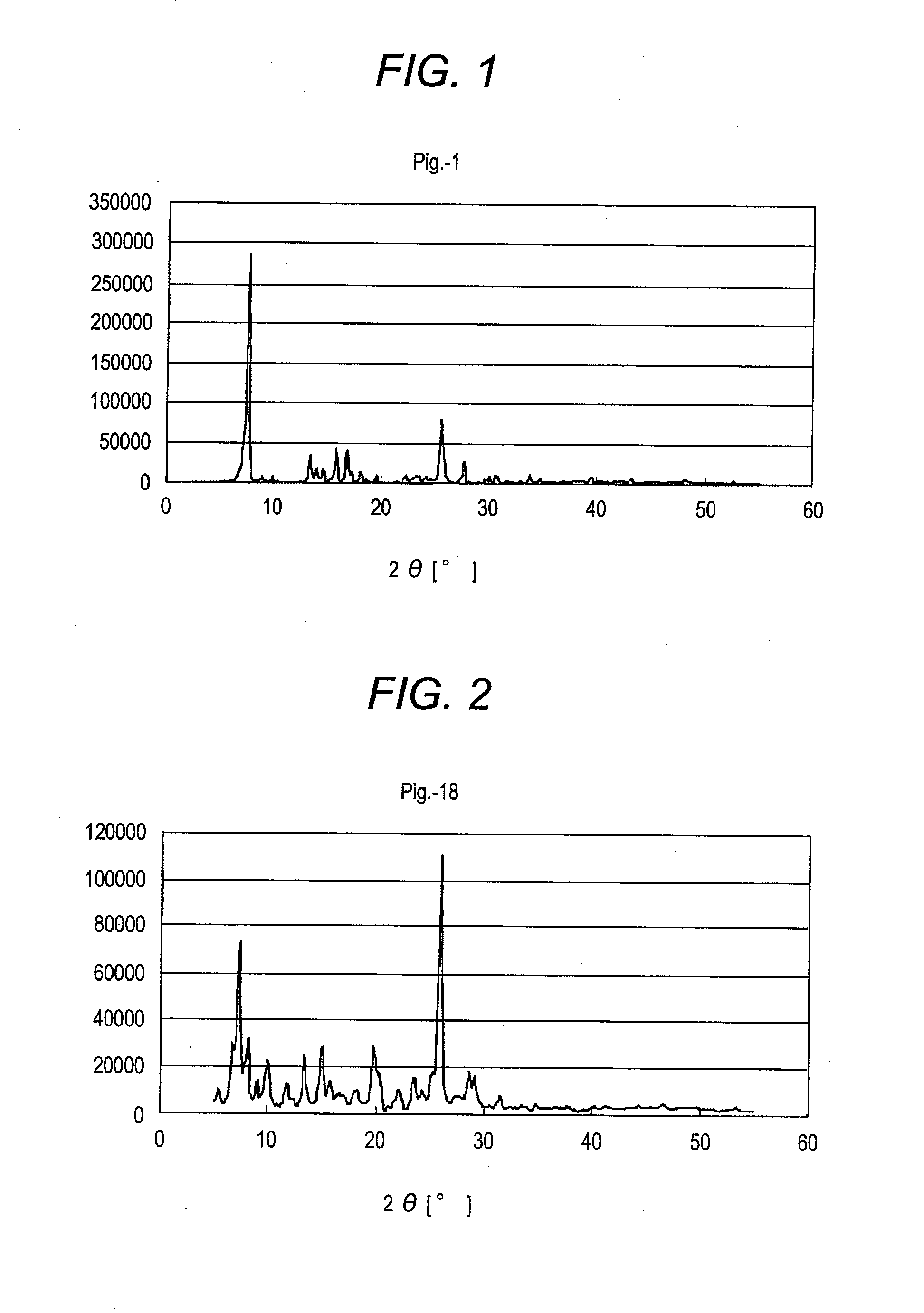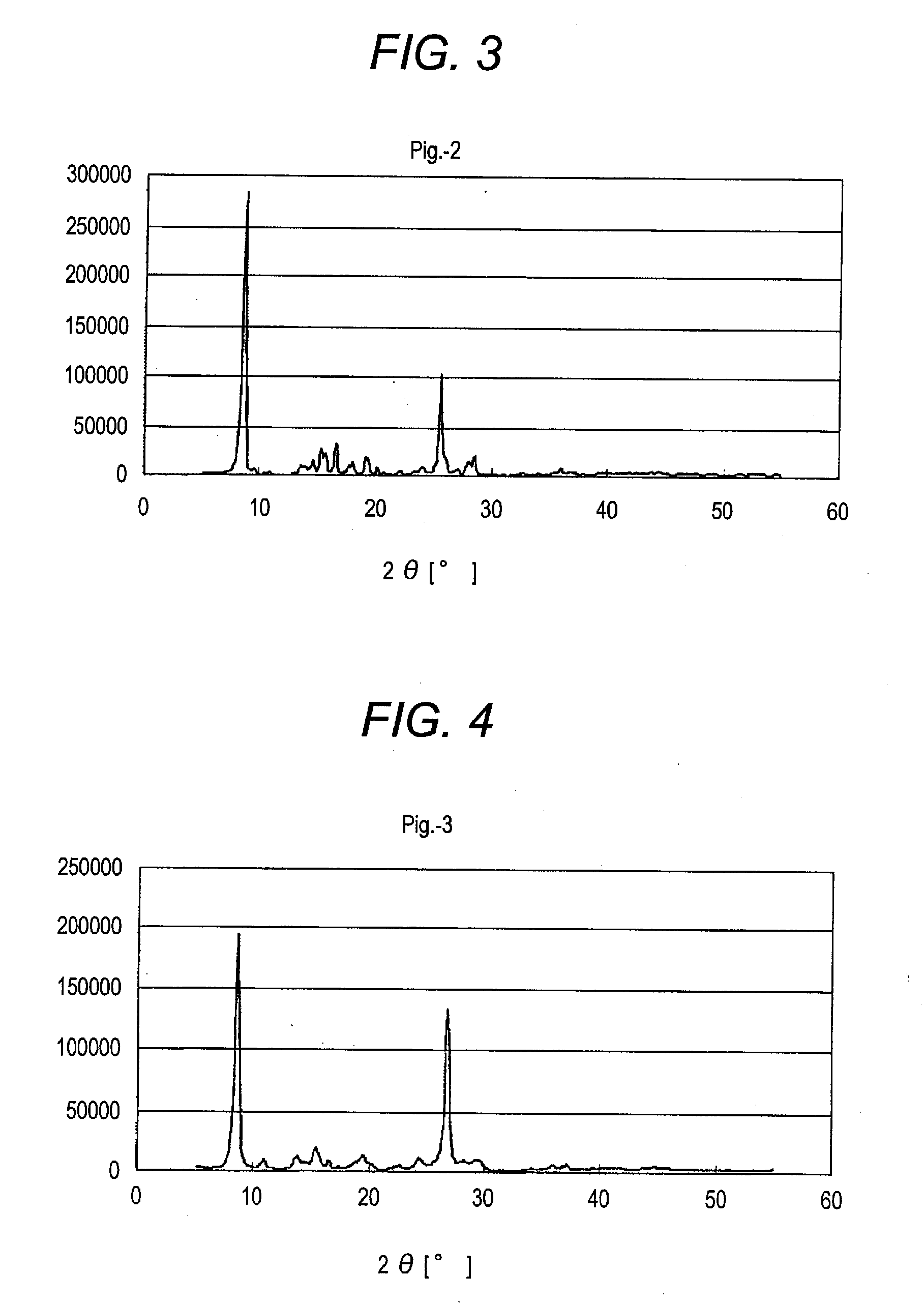Ink set, recording method, recorded material and printed material
a technology of ink sets and recording methods, applied in the direction of instruments, disazo dyes, transportation and packaging, etc., can solve the problems of inability to impart satisfactory light resistance to ink compositions, inferior pigments to dyes in tinctorial strength, and lack of vividness of images obtained by printing on recording materials, etc., to achieve excellent color reproducibility and light resistance, excellent color reproducibility, fastness to ozone gas
- Summary
- Abstract
- Description
- Claims
- Application Information
AI Technical Summary
Benefits of technology
Problems solved by technology
Method used
Image
Examples
synthesis example 1
[0351](Synthesis of Azo Pigment) A synthesis scheme of an azo pigment (Pig.-1) is illustrated below.
(1) Synthesis of Intermediate (a)
[0352]42.4 g (0.4 mol) of trimethyl orthoformate, 20.4 g (0.2 mol) of glacial acetic acid, and 0.5 g of p-toluenesulfonic acid are added to 29.7 g (0.3 mol) of methyl cyanoacetate, and the resulting mixture is heated to 110° C. (external temperature), followed by stirring for 20 hours with distilling off low-boiling components produced from the reaction system. The resulting reaction solution is concentrated under reduced pressure, and is subjected to purification by silica gel column to obtain 14.1 g (yellow powder; yield: 30%) of the intermediate (a). Results of NMR measurement of the thus-obtained intermediate (a) are as follows. 1H-NMR (300 MHz, CDCl3): 7.96 (s, 1H), 4.15 (s, 3H), 3.81 (s, 3H)
(2) Synthesis of Intermediate (b)
[0353]150 mL of isopropanol is added to 7.4 mL (141 mmol) of methylhydrazine, followed by cooling to 15° C. (internal tempera...
synthesis example 2
[0360](Synthesis of Azo Pigment) A synthesis scheme of an azo pigment (Pig.-18) is illustrated below.
(1) Synthesis of Intermediate (a)
[0361]To 29.7 g (0.3 mol) of methyl cyanoacetate, 42.4 g (0.4 mol) of trimethyl orthoformate, 20.4 g (0.2 mol) of acetic anhydride and 0.5 g of p-toluenesulfonic acid were added, and heated up to 110° C. (external temperature). This reaction system was stirred for 20 hours as low boiling components produced therein were distilled away. The reaction solution obtained was subjected to reduced-pressure concentration, and then to purification with a silica gel column. Thus 14.1 g of the intermediate (a) (yellow powder, 30% yield) was obtained. NMR-measurement results on the intermediate (a) obtained are as follows. 1H-NMR (300 MHz, CDCl3): 7.96 (s, 1H), 4.15 (s, 3H), 3.81 (s, 3H)
(2) Synthesis of Intermediate (b)
[0362]To 7.4 mL (141 mmol) of methylhydrazine, 150 mL of isopropanol was added, and cooled to 15° C. (internal temperature). To this mixed solutio...
synthesis examples 3 to 19
[0371]Azo pigments of the invention shown in the following Table 1 are synthesized according to the above-described synthesis process of the above-illustrative compounds (Pig.-1) and (Pig.-18) shown in the above-described Synthesis Examples 1 and 2 or by combining the production process of the azo pigments of the present invention.
[0372]The X-ray diffraction patterns with characteristic Cu Kα line of the thus-obtained azo pigments are shown in FIGS. 3 to 19.
TABLE 1X-ray Diffraction Pattern withAzo Pigment of Inventioncharacteristic Cu Kα linePig.-1 FIG. 1 Pig.-18FIG. 2 Pig.-2 FIG. 3 Pig.-3 FIG. 4 Pig.-6 FIG. 5 Pig.-10FIG. 6 Pig.-12FIG. 7 Pig.-15FIG. 8 Pig.-16FIG. 9 Pig.-19FIG. 10Pig.-21FIG. 11Pig.-24FIG. 12Pig.-25FIG. 13Pig.-26FIG. 14Pig.-30FIG. 15Pig.-31FIG. 16Pig.-32FIG. 17Pig.-33FIG. 18Pig.-34FIG. 19
PUM
| Property | Measurement | Unit |
|---|---|---|
| 2θ±0 | aaaaa | aaaaa |
| 2θ±0 | aaaaa | aaaaa |
| 2θ±0 | aaaaa | aaaaa |
Abstract
Description
Claims
Application Information
 Login to View More
Login to View More - R&D
- Intellectual Property
- Life Sciences
- Materials
- Tech Scout
- Unparalleled Data Quality
- Higher Quality Content
- 60% Fewer Hallucinations
Browse by: Latest US Patents, China's latest patents, Technical Efficacy Thesaurus, Application Domain, Technology Topic, Popular Technical Reports.
© 2025 PatSnap. All rights reserved.Legal|Privacy policy|Modern Slavery Act Transparency Statement|Sitemap|About US| Contact US: help@patsnap.com



